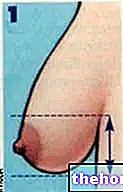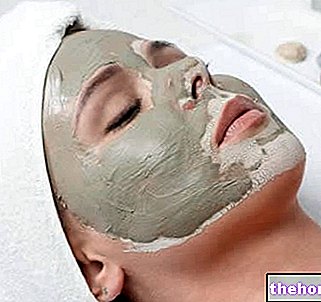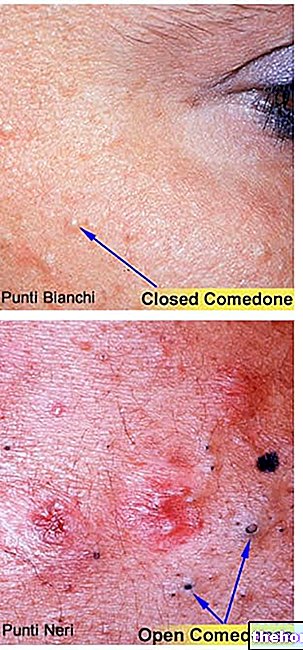What is the beeswax
Beekeeping product par excellence, in addition to honey and propolis, beeswax is a secretion of the homonyms, small, insects (Apis mellifera), with which they build the internal structures of the hive (comb) where the honey is stored.

For many years, therefore, beeswax has been a material of enormous importance for man, being the only natural product of its kind available. Currently, the field of use of beeswax has narrowed, since it has been replaced with similar materials, sometimes less expensive. However, this does not mean that beeswax has lost its value. In fact, it should not be forgotten that beeswax is a by-product of honey extraction: it is believed that to collect a kilo of honey bees must fly for 530,000 km.
Production
The honeycomb represents a geometric construction made up of thousands of cells: small hexagonal containers built with extreme precision by bees inside which honey and pollen are deposited and where the larvae are raised.
This construction is entirely made up of wax, the secretion product of the ceripar glands located in the ventral part of the abdomen of the worker bees. The aforementioned glands do not function during the entire life of the insect, but only in the juvenile phase, which corresponds to the period between the 10th and 18th day after the flickering. Furthermore, the glands are able to produce wax only when the temperature of the hive is variable between 33 and 36 ° C. The wax glands form wax in the form of droplets: in contact with the air, the droplets solidify forming small flakes of wax, which remain "glued" to the "abdomen of the bee." Subsequently, the insect extracts the flakes of wax from the abdomen with the legs, to model them with the jaws together with pollen and propolis.
The procedure just described is repeated hundreds of times for each scale: the final result, derived from all the 10,000-90,000 worker bees in the hive, will be the perfect construction of the honeycomb [taken from Beekeeping, technique and practice, by A. Pistoia].
Collection and extraction
The collection of the honeycomb is essential to recover the wax, as well as to obtain honey. The wax can be extracted in three ways:
- In a bain-marie / boiling water;
- By fusion, by means of solar waxers (solar energy is used to melt the wax);
- Through presses and steam.
Generally, a quantity of beeswax equal to 80-110 grams is obtained from each honeycomb.

The beeswax obtained from brood combs in which the larvae are raised, on the other hand, is darker in color, due to the greater number of impurities trapped in it. Therefore, before being used for any purpose, this wax must be properly treated and purified.
Types of Beeswax
Depending on the procedures to which it is subjected following its collection, we can distinguish two types of beeswax, the uses of which are in any case superimposable:
- Yellow wax: it is the wax obtained by simple collection and extraction from the honeycomb. It is yellow in color and is characterized by its typical and pleasant aroma.
- Cera alba: it is obtained through the purification and whitening of the yellow wax through the action of air or through the action of chemical agents such as chlorine, chromic acid, hydrogen peroxide, etc. Normally, cera alba it does not have the delicate and pleasant aroma which, on the other hand, characterizes untreated yellow wax.
Features
As soon as the wax is secreted by the bees' wax glands, it turns out white; subsequently, due to the presence of the pigments contained in the pollen and propolis, the wax takes on a yellow-reddish color (yellow wax), sometimes brown.
The wax is greasy to the touch, ductile and flexible, and has an intense aroma. Its melting point corresponds to 62-65 ° C.
Chemical analysis
Considering that it is a completely natural product, the chemical composition of beeswax is quite variable. In particular, the variations are particularly accentuated between one geographical area and another.
However, in general, beeswax consists of approximately:
- 70-80% of waxy acid esters (palmitic, melissic and cerotic acid);
- 12-16% of hydrocarbons;
- 14% of free fatty acids and derivatives (palmitic acid, palmitates, etc.);
- 1-5% propolis, pigments and other substances;
- 1-2% free alcohols;
- 1-2% water.
Clearly, beeswax is a product belonging to the category of lipids, therefore it is insoluble in water, partially soluble in alcohol and completely soluble in compounds such as chloroform, gasoline, ether, etc.
Property
Given its particular composition, beeswax has various properties that allow it to be widely used in various sectors.
In detail, the beeswax is equipped with:
- Emollient properties;
- Water-repellent and protective properties (as it forms a sort of film on the surface on which it is applied);
- Emulsifying and viscosifying properties.
In ancient times, moreover, it was believed that beeswax also possessed healing properties and, for this reason, it was applied hot (then melted) on wounds, in order to facilitate healing.
However, in all likelihood, beeswax could facilitate wound healing, not because it has real healing properties, but because it is capable of creating a barrier capable of protecting the wound from the external environment, while preventing development of any infections.
Uses
As mentioned, the properties of beeswax are exploited in many sectors. In fact, they are well suited to the formulation of candles, cosmetic products and pharmacological specialties, as well as being exploited for the preparation of polishing products.
Use cosmetics
In the cosmetic field, beeswax is used for its water-repellent and protective potential on the stratum corneum: in fact, close to the skin, products formulated with beeswax form a sort of protective film, capable of preventing the " excessive loss of water from the skin.
Moreover, given its emollient properties and its ability to form very stable emulsions, beeswax is widely used in the preparation of lipogels, lip sticks, emulsions and ointments.
At the same time, cosmetics uses this bee product as a thickening agent and to give greater stability to different types of cosmetic preparations, such as ointments and emulsions.
Food uses
Beeswax is a very safe ingredient, so much so that it also finds various uses in the food sector.
In fact, it is used to coat cheeses, even if, sometimes, the wax that wraps the cheeses is replaced by plastic.
Furthermore, beeswax is used as a food additive (identified by the initials E901) with a polishing action. Therefore, it is used to give food a shiny appearance.
Other uses
Beeswax has numerous other uses, such as, for example:
- Production of candles;
- Production of products for polishing furniture and shoes;
- To assemble pool tables;
- For the production of mustache wax;
- For the production of Punic wax, a substance used in certain painting techniques;
- For the production of handmade soaps;
- To create different types of molds to be used in the so-called lost wax casting.
Side effects
Normally, beeswax is such a safe and well tolerated ingredient that it does not cause any kind of unwanted effect, even when applied to the most sensitive skin.
However, like any other substance, the possible onset of allergic reactions in sensitive individuals cannot be excluded, especially when it is not completely purified as it may contain traces of honey, propolis, pollen or other impurities.
Summary
To fix the concepts ...
Beeswax: description
Beekeeping product par excellence, in addition to honey and propolis, beeswax is a secretion of bees (Apis mellifera); it is a by-product of honey processing
Beeswax: function in the honeycomb
Beeswax forms the internal structures of the hive (comb) in which honey is stored
Beeswax production
- Beeswax: secretion product of the ceripar glands located in the ventral part of the abdomen of worker bees;
- Ceripar glands: functioning in the juvenile phase of the worker bee, when the temperature of the hive is between 33 and 36 ° C;
- Beeswax formation: the wax glands form wax in the form of droplets, which solidify in contact with the air (glued to the abdomen of the bee);
- Construction of the honeycomb: modeling of the wax thanks to the jaws of the bee.
Beeswax: coloring
- White wax: immediately after secretion from the ceripar glands;
- Yellow-red-brownish wax: variation in color due to the presence of pigments contained in pollen and propolis;
- Alba wax: obtained from the purification / bleaching of yellow wax.
Beeswax: general characteristics
- Tactile characteristics of beeswax: greasy, ductile, flexible, plastic;
- Aroma: intense;
- Beeswax in cosmetics: safe in cosmetic formulations and forms very stable emulsions;
- Solubility: insoluble in water, partially soluble in alcohol and completely soluble in compounds such as chloroform, gasoline, ether, etc .;
- Melting point: 62-65 ° C.
Beeswax: chemical composition
Approximate chemical composition of beeswax:
- 70% of waxy acid esters;
- 12-16% of hydrocarbons;
- 14% of free fatty acids and derivatives (palmitic acid, palmitates, etc.);
- 1-5% propolis, pigments and other substances;
- 1-2% free alcohols;
- 1-2% water.
Beeswax: collection and extraction
Extraction of beeswax:
- In a double boiler / boiling water.
- By fusion (by means of solar waxers: solar energy is used to melt the wax).
- Through presses and steam.
Beeswax: uses
- Formulation of candles;
- Formulation of pharmacological specialties;
- Polishing preparations for shoes and furniture;
- Cosmetic field: water-repellent-protective products, formulation of lipogels, lip sticks, emulsions and ointments;
- Used to assemble pool tables;
- Cheese coating;
- Food additive (polishing agent: E901).
Beeswax: side effects
It does not normally induce side effects. However, there is the possibility that allergic reactions may occur in sensitive individuals.




























